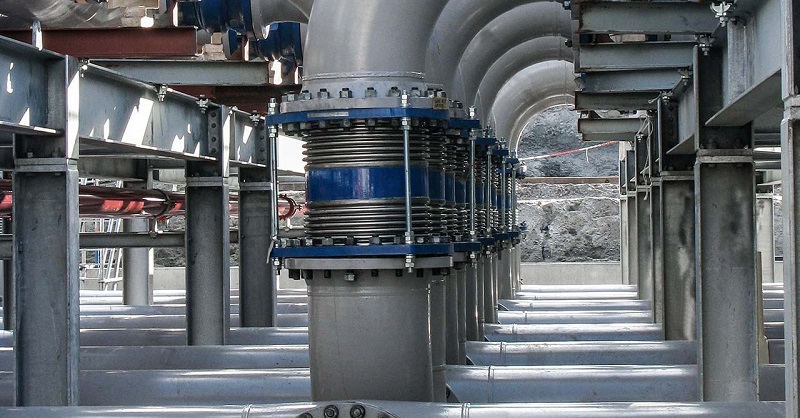Are you experiencing the same pump failing over and over again in your system? Even after going through maintenance processes, repairs, re-installation, and correcting alignment? If you take a closer look, you may realise that it may be down to chronic vibration issues. These may not be admitted from the pump, but possibly from other bits of equipment along the system. But, how can you stop these rogue vibrations? By adding pipe expansion joints.
What is a pipe expansion joint?
A pipe expansion joint is installed into a pipeline for a few reasons. They can not only be used as a way of absorbing shock and vibrations along the line, but they can be used to relieve anchor stress, lower noise, and compensate for any misalignment. Particular types of expansion joints have been designed to help with thermal expansion in extremely hot systems.
Expansion joints help by allowing pipes to move in the following ways:
- Axial compression and extension
- Angular deflection
- Lateral offset
They are usually made from metal, rubber, and braided metal to cover different varieties of applications. We explain these in more detail:
Metal Pipe Expansion Joint
Metal expansion joints are mainly used for systems where there is a possibility of thermal expansion – such as transporting hot liquids. When the temperature increases in a pipe, the metal pipe expansion joint would compress to make up for the movement, thus taking pressure off the anchors and pipe.
A metal expansion joint is a perfect example of how to solve the issue of expanding pipes from heat.
Rubber Pipe Expansion Joint
These can also be used for the issue of thermal pipe expansion, however, they can also be used to help with vibration and shock. Rubber expansion joints are great to help with noise reduction too and stopping vibrations from other equipment surrounding the system.
Braided Metal Hoses with Flexible Liners
Whilst these aren’t technically expansion joints, they work in the same way. Braided metal hoses with flexible connectors work extremely well in high temperatures and high pressures. They help to dampen vibrations and compensate for alignments.
Why would I need a pipe expansion joint?
The following issues in a piping system would be helped by an expansion joint:
- Thermal pipe expansion
- Solving pipe misalignments and settlement lateral offsets
- Vibrations from pumps and other equipment
- Sock and bending loads

